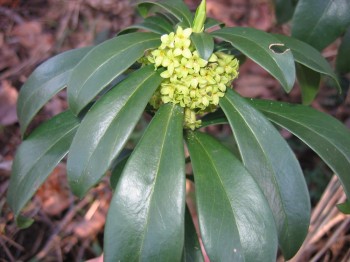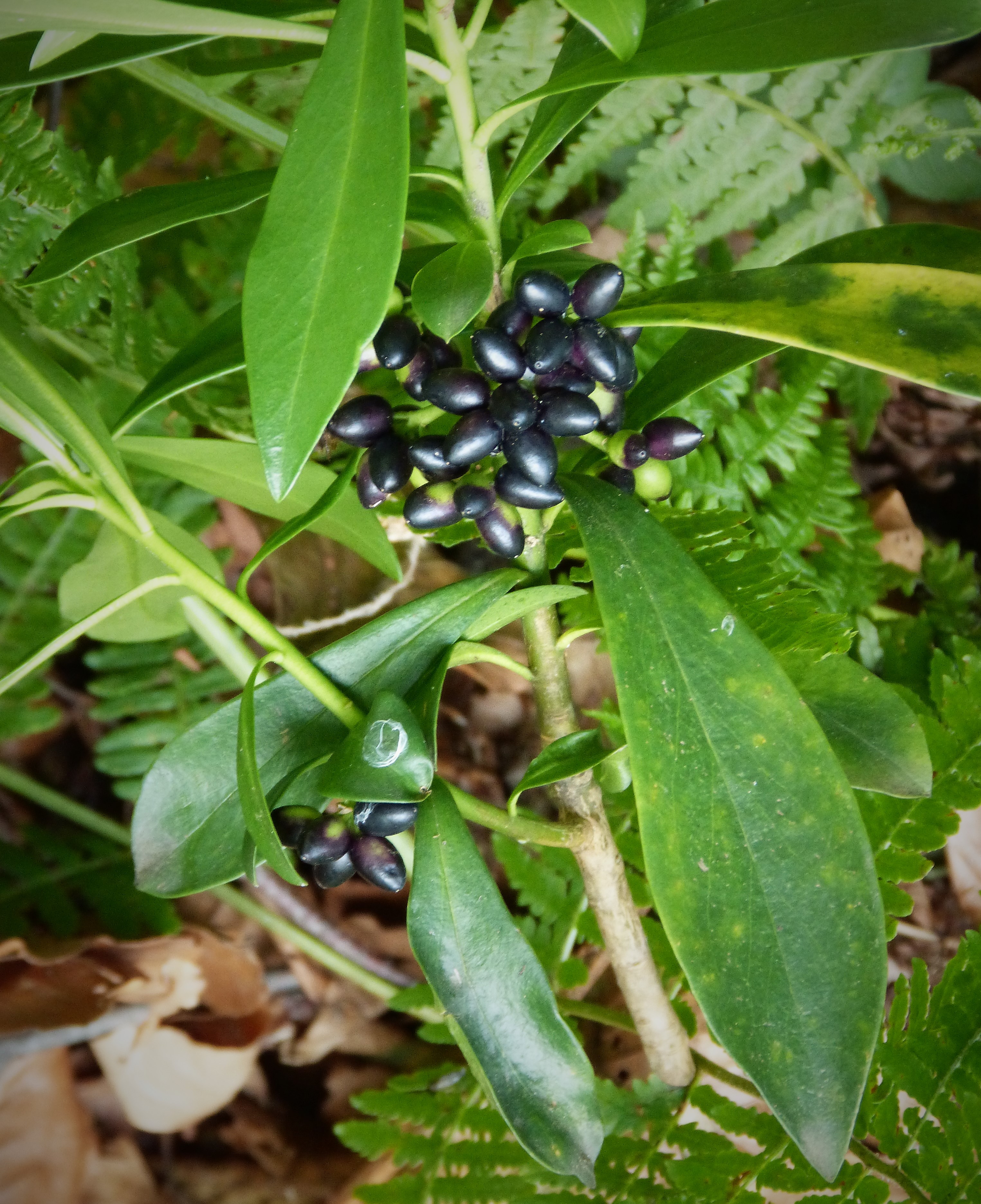Spurge Laurel

Spurge Laurel
(Daphne laureola)
Priority: - Contain / Annual Control
Tags: Terrestrial | Toxic
Identification and Reproduction
Identification:
- Spurge-Laurel, also known as Daphne laurel, is an evergreen shrub with spring-blooming yellowish green flowers and black berries.
- Can grow up to 1.5 meter height
- Leaves are very dark green, shiny, smooth and thick, arranged in a whorled pattern.
- The twigs are stout and have a strong odor when cut.
- Flowering occurs from late January to late March or early April, followed by berries in early summer - flowers are pale yellow and located between leaf nodes (not at the tip of stems like other similar shrubs like rhododendrons)
- Occurring in late summer, the berries are black and poisonous to people and pets, but not to birds.
Reproduction:
Spurge laurel can reproduce by seed or reproduce vegetatively through the production of root sprouts - always look around for any new plants up to 5 m away
Habitat & Ecology
Spurge laurel can grow in a wide range of conditions, but thrives in full to partial shade and well-drained soils. In the Fraser Valley, this plant is mostly contained to private gardens and hidden under neighbourhood clumps of trees
Impacts
Social:
TOXIC PLANT - DO NOT CONSUME
- Health risk to people and pets.
- Contain toxic sap that is POISONOUS
- Listed as a Toxic Plant by WorkSafeBC - a child in Nova Scotia unfortunately died after consuming the berries
- Skin contact symptoms include: Skin irritation, blistering, or rashes
- Ingestion poisoning symptoms include: burning in mouth, swelling of tongue/lips, followed by thirst, difficulty swallowing, nausea, vomiting, bloody diarrhea, weakness, and coma
Ecological:
- Outcompetes native forest species.
Management
Mechanical/Manual Control:
IMPORTANT: Due to the toxins in the sap, stem, leaves, and fruits, it is advisable to wear gloves and other protective gear when handling spurge laurel. Please also protect your eyes by not touching or cutting plants near (which can temporarily aerosolize the sap) your face.
- This plant grows via sucker roots - ALWAYS look around for more plants up to 5m away
- Hand pulling small infestations is effective.
- Larger shrubs that are too big to pull can be cut below soil line.
- Use equipment that help gain leverage to dig up roots.
- Watch the area for resprouts and pull/recut as needed.
Chemical Control:
- Herbicide application can be applied to the stem immediately after cutting
- Always follow herbicide label instructions
For alternative planting options to spurge laurel, reivew the ISCBC's Grow Me Instead guide.
Resources
For further details on Spurge Laurel control please refer to the Metro Vancouver Best Management Practices for Spurge Laurel (pg. 11-20)
Download the Metro Vancouver Factsheet on Spurge Laurel here.
Refer to WorkSafeBC's Toxic Plant Warning for more information for human health safety.
King County offers more information on spurge laurel identification and control methods. Note this is a US resource so Canadian guidelines and reguations may differ. Be sure to read product and chemical labels prior to use.
Header photo (peganum).




